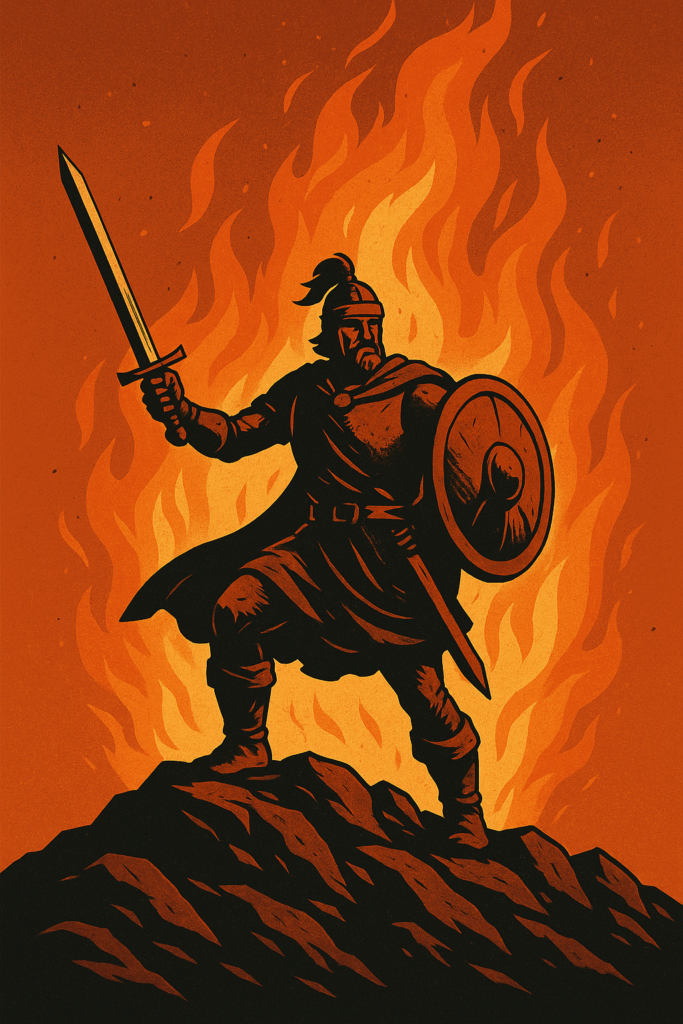
What would you do if failure meant everything was over? No escape route, safety net and a backup plan. Just you… and the battle ahead.
“The Death-Ground: Place yourself where your back is against the wall and you have to fight like your life depends on it.” It’s not just military wisdom. It’s a mindset. When used deliberately, it can ignite extraordinary results in business, creativity, leadership, and life.
What Is “Death Ground,” Really?
The concept originates from Sun Tzu’s The Art of War, where he describes “death ground” as territory where troops are trapped—with no route to escape. Their only option? Win or die.
In these scenarios, armies stop hesitating. They stop calculating. They fight with an intensity and clarity that only desperation can trigger.
We can evolve this idea into something much broader:
When we intentionally cut ourselves off from safety nets, we unlock a deeper level of focus, boldness, and resilience.
“Death ground” is not always literal—it can be emotional, financial, reputational, or psychological.
The Psychology Behind Death Ground
So how does this work?
1. It Eliminates Distraction
When you are not thinking, “Well, if this doesn’t work, I’ll try something else,” your brain stops entertaining alternatives. You stop negotiating with your comfort zone.
2. It Bypasses Overthinking
Pressure forces instinctive action. You don’t have time to second-guess or spiral in self-doubt. You just move to win.
3. It Unlocks Primal Focus
With survival at stake—whether literal or metaphorical—your body floods with adrenaline, sharpening every decision. This is why some people do their most brilliant work right before a deadline. The clock becomes their death ground.
Historical Examples – Deep Dive
In 1519, Hernán Cortés, a Spanish conquistador, arrived on the shores of what is now Mexico with roughly 600 men, a handful of horses, and limited supplies. His mission? Conquer the powerful Aztec Empire — a civilization with an estimated population in the millions.
By all logic, the odds were laughably against him.
And yet… Cortés pulled off one of the boldest strategic moves in military (and psychological) history.
He burned his own ships.

Why He Did It
Cortés understood something fundamental:
As long as his men believed they had a way to retreat, they would never fully commit to the battle ahead.
Mutiny and fear were real threats. The journey had been long and brutal. Some of his men had already started to question the mission. There was a real risk that, at the first sign of danger, they would try to abandon ship — literally. So, he removed that option.
Some accounts say he burned the ships. Others say he simply disabled them. Either way, the message was crystal clear:
“There is no going back. We win here, or we die here.”
This Is the Death-Ground Strategy in its Pure Form
Cortés had created death ground — a situation where retreat was impossible and the only way to survive was through total commitment to victory.
This strategy forced:
- Courage to the surface
- Focus on the objective
- Discipline and unity among troops
- And ultimately, results
And that’s exactly what Cortés got. His men, who were previously hesitant and outnumbered, now fought with the desperation of those who had no choice. Step by step, they forged alliances, exploited Aztec rivalries, and used superior tactics to bring down an empire.
Was It Risky? Absolutely.
Cortés placed everything on the line. Had they failed, they would’ve been wiped out. But in return for the risk, he gained something far more powerful: unshakable commitment from his troops. And that was the edge he needed to change the course of history. You don’t get the glory of conquest by playing it safe.
Application Of Death-Ground in Real Life
You don’t need to face life-and-death stakes to use this strategy. But you do need to understand how to recreate the psychology of urgency and total commitment.
1. Create Artificial Consequences
Set hard deadlines. Make public commitments. Tie your success to visible outcomes that matter to you.
2. Remove the Safety Net
Sometimes progress doesn’t happen because we leave ourselves too much room to fall back.
Example: Want to quit a soul-sucking job and start your business? Don’t wait forever—save just enough, then leap. The pressure will drive action.
3. Use Controlled Traps
Don’t risk your life or livelihood recklessly. Set high-stakes challenges within boundaries.
Example: Put down a non-refundable deposit for a professional course or speaking event. Now you have to prepare.
4. Tap into Inner Death Grounds
Sometimes it’s not external pressure but internal conviction that matters.
Ask: What’s at stake if I never try? What will it cost me to stay stuck?
Warning: Use It Wisely
The Death-Ground Strategy is a weapon, not a lifestyle. Living in constant fight-or-flight is unsustainable. You use this strategy to break through stagnation or ignite urgent progress, then return to stability.
Use it when:
- You are stuck in comfort
- You’ve outgrown your current limits
- You need to unlock bold action
Avoid it when:
- Emotionally burnt out
- Have no resources left to recover
- Risking what you can’t afford to lose
Final Thought: Burn the Excuses, Not the Ships
The real enemy is comfort. It’s the voice that says, “You can always try later.”
It’s the safety net that becomes a cage.
The Death-Ground works because it forces you to choose greatness over guarantees. It forces you to act, or perish—metaphorically or otherwise. So, when the moment comes, and you need to level up, remember this:
Sometimes the only way to win is to leave yourself no other choice.
